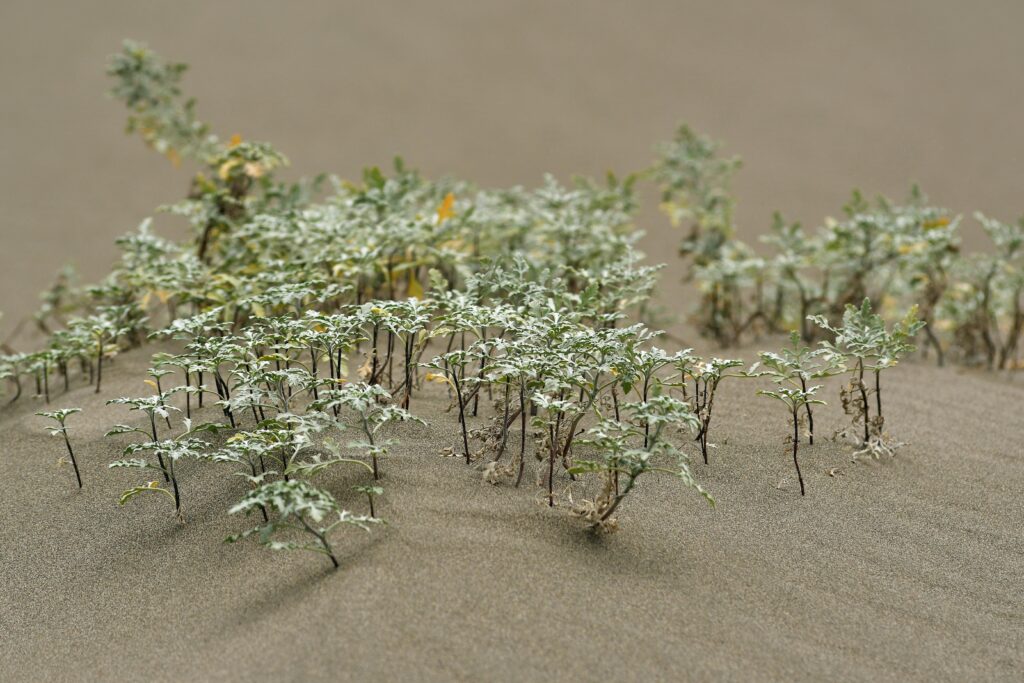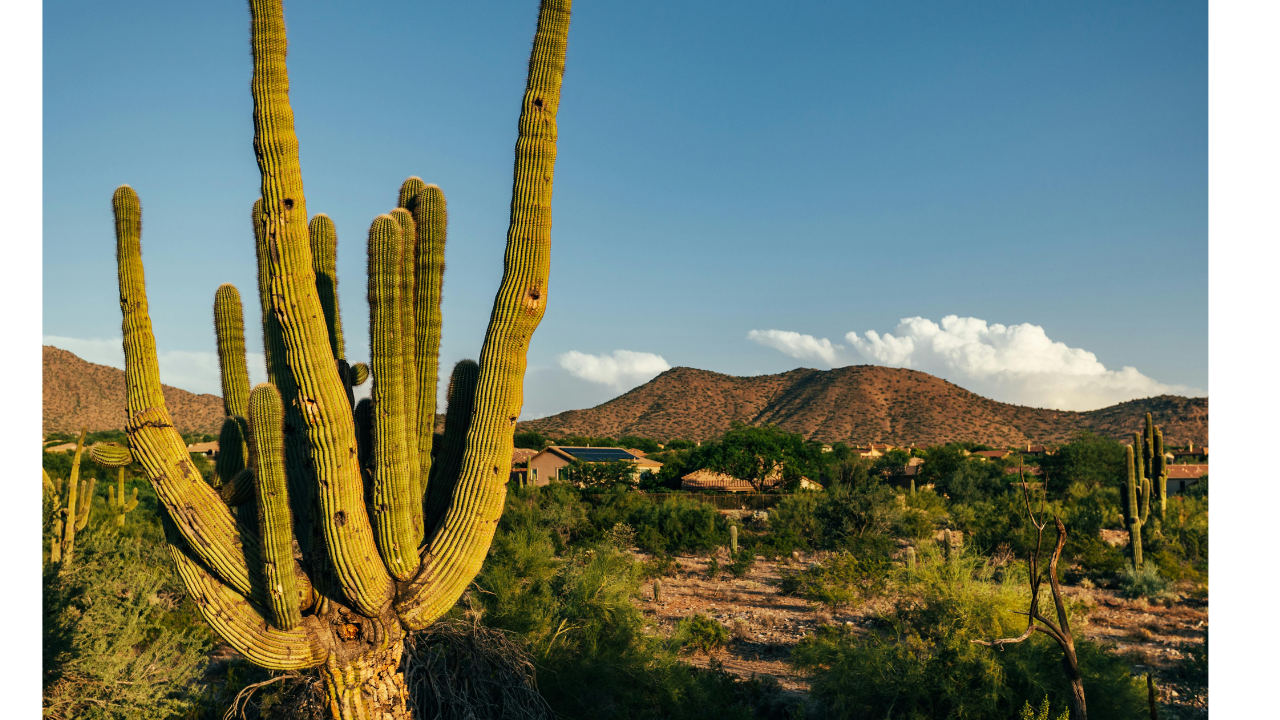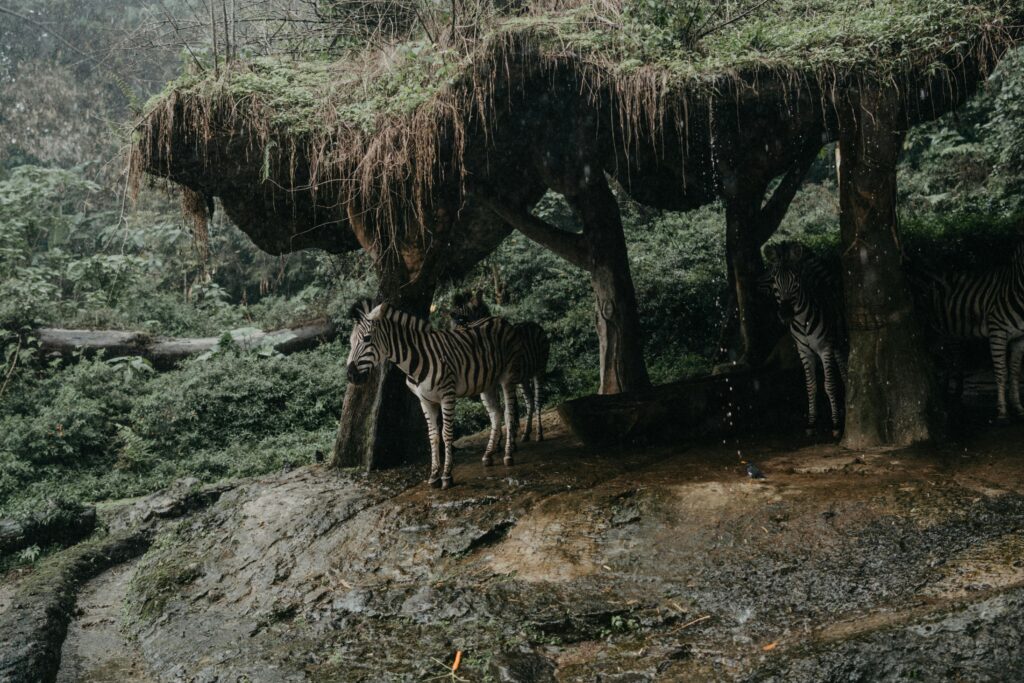Desert environments are some of the most challenging places on Earth for life to thrive. These arid regions, characterized by extreme temperatures, minimal rainfall, and nutrient-poor soils, pose severe challenges to any form of life.
Desert plants adapt through a collection of specialized mechanisms that empower them to sustain in extreme conditions. Yet, despite these seemingly insurmountable obstacles, desert plants adapt with extra extraordinary adaptations that allow them to survive and flourish. The adaptations of these desert plants are a testament to the resilience and ingenuity of nature.

In deserts, the struggle for survival is relentless. The conditions here are so extreme that only the most resourceful organisms can endure them. For plants, this means evolving a range of specialized adaptations that allow them to conserve water, manage extreme temperatures, and reproduce in an environment where resources are scarce.
Understanding these adaptations offers a glimpse into how desert plants adapt to incredible strategies to overcome the harsh realities of desert life.
In this article, we will delve into the fascinating world of desert plant adaptation. We’ll explore the challenges that desert plants adapt to and the ingenious solutions they’ve developed to thrive in such unforgiving environments. From water conservation strategies to temperature regulation, reproductive adaptations, and defensive mechanisms, we’ll cover how desert plants adapt to survive and thrive.
We’ll also examine some specific examples of how desert plants adapt, showcase these adaptations, and discuss the broader importance of these plants in both ecological and human contexts.
By the end of this article, you’ll have a deep appreciation for how desert plants adapt and the vital role they play in maintaining the balance of their ecosystems. Let’s begin by exploring the challenges that make desert life so difficult and how desert plants adapt to meet these challenges head-on.
Desert Plants Adaption
In the face of non-stop heat and scarce water, desert plants adapt with incredible strategies, securing their survival in some of the most unforgiving environments on Earth. These adaptations highlight the resilience and ingenuity of nature.
The Challenges of Desert Life
Deserts are defined by their arid climates, with annual rainfall often less than 10 inches (25 cm). These environments are inhospitable to most forms of life due to the extreme challenges they present. For plants, the key challenges of desert life include extreme temperatures, water scarcity, and poor soil conditions. Each of these challenges has driven the evolution of how desert plants adapt in ways that are crucial for survival.
Extreme Temperatures
Deserts are notorious for their extreme temperature fluctuations. During the day, temperatures can soar above 100°F (38°C), creating an environment that can easily scorch and dehydrate any unprotected organism. However, once the sun sets, these same deserts can become chillingly cold.

with nighttime temperatures sometimes dropping below freezing. This dramatic shift between blistering heat and cold makes the desert a particularly challenging environment for plants, which must find ways to endure these temperature extremes, Desert plants adapt by developing reflective surfaces, such as light-colored leaves and stems.
One of the most important adaptations of desert plants is the ability to regulate heat absorption and loss. Some plants have developed reflective surfaces, such as light-colored leaves or stems, which help reflect sunlight and reduce heat absorption. Others have evolved to minimize their surface area, reducing heat absorption during the day.
reducing the amount of heat they absorb during the day. Desert plants adapt by reducing the amount of heat they absorb during the day, These adaptations help prevent overheating during the day while retaining warmth at night, allowing plants to endure the desert’s temperature extremes.
Scarcity of Water:
Water is the most precious resource in the desert. With rainfall often limited to brief, intense bursts, desert plants must be able to survive long periods without water. The arid climate causes rapid evaporation, meaning that even when water is available,
it quickly disappears. This water scarcity has driven desert plants to evolve numerous adaptations designed to conserve and efficiently use every drop of moisture.
Some of the most well-known desert plant adaptations related to water conservation include succulent structures, deep root systems, and reduced leaf surface area. Succulent plants, such as cacti, store water in their thick,
fleshy tissues, allowing them to survive long dry spells. Deep-rooted plants, like the Mesquite tree, can access underground water sources that other plants cannot reach. Shallow, spreading roots allow plants to absorb surface moisture from brief rains before they evaporate quickly. These adaptations, among others, are vital for survival in deserts where water is always in short supply.
Poor Soil Conditions:
Desert soils are typically sandy, low in nutrients, and have poor water retention capabilities. These conditions make it difficult for plants to extract the necessary nutrients and moisture for growth. However, desert plants have evolved to thrive even in these nutrient-poor soils through various desert plants.

One such adaptation is the development of symbiotic relationships with soil microorganisms that assist plants in obtaining nutrients. For example, some desert plants form associations with mycorrhizal fungi.
which helps the plants absorb nutrients from the soil. Additionally, many desert plants have developed specialized root systems that allow them to efficiently capture and use the limited nutrients available in the soil. These adaptations enable desert plants to survive and grow in soils that would be inhospitable to most other plants.
Water Conservation Strategies
Water conservation is perhaps the most critical aspect of survival in the desert. Without sufficient water, plants cannot carry out essential functions like photosynthesis, nutrient transport, and growth. As a result, desert plants adapt by focusing on water conservation, which is among the most remarkable strategies observed in nature.
When it does rain, these plants can absorb large amounts of water quickly, storing it in their tissues for use during dry spells.
This adaptation allows desert plants to adapt by sustaining a steady water supply, even during extended dry periods. Additionally, the thick, waxy cuticle that covers the surface of many succulents helps reduce water loss by creating a barrier against evaporation.
Deep Root Systems: While succulents store water in their tissues, other desert plants rely on their root systems to access water. One of the most impressive adaptations is the development of deep root systems that access underground water sources.

The mesquite tree, for example, has roots that can extend more than 100 feet (30 meters) deep, allowing it to tap into groundwater reserves far below the surface. These deep roots allow the tree to survive even during prolonged droughts when surface water is unavailable.
In addition to having deep roots, some desert plants have roots that spread out horizontally, allowing them to capture water from a wide area. This strategy is particularly effective in deserts where rainfall is sporadic and localized.
By spreading their roots, these plants can quickly absorb moisture, maximizing water intake.
Shallow, Spreading Roots: Not all desert plants rely on deep roots to access water. Some have evolved shallow, spreading roots that allow them to quickly absorb surface moisture from brief rains.
These roots are often close to the soil surface, where they can take advantage of even the smallest amount of precipitation. This adaptation is particularly important in deserts where rainfall is infrequent and brief.
For example, the creosote bush, a common desert plant, has an extensive network of shallow roots that can absorb water from the soil within minutes of rainfall.
This rapid absorption allows the plant to make the most of the limited water available in its environment. The shallow roots also help the plant capture dew, which can provide a small but vital source of moisture in arid conditions.
Reduced Leaf Surface Area: Another key desert plant adaptation is the reduction of leaf surface area. Many desert plants have evolved tiny leaves or no leaves at all.
Succulent Structures: One of the most iconic desert plant adaptations is the development of succulent structures. Succulent plants, such as cacti, agaves, and aloes, have thick, fleshy tissues that store water. These water reserves allow the plants to survive long periods of drought.
The ability to store water is not limited to the plant’s tissues. Some succulents also store water in their roots, which can swell to several times their normal size after absorbing water..
In addition to having deep roots, some desert plants have roots that spread out horizontally, allowing them to capture water from a wide area. This strategy is particularly effective in deserts where rainfall is sporadic and localized.
By spreading their roots over a large area, these plants can quickly absorb any moisture that falls, maximizing their water intake.
These roots are often close to the soil surface, where they can take advantage of even the smallest amount of precipitation. This adaptation is particularly important in deserts where rainfall is infrequent and brief.
For example, the creosote bush, a common desert plant, has an extensive network of shallow roots that can absorb water from the soil within minutes of rainfall.
This rapid absorption allows the plant to make the most of the limited water available in its environment. The shallow roots also help the plant capture dew, which can provide a small but vital source of moisture in arid conditions.
minimize the surface area through which water can be lost. By reducing the size of their leaves, these plants minimize the amount of water lost through transpiration, the process by which water evaporates from the surface of the leaves.
Some desert plants, such as cacti, have replaced their leaves with spines, which have a much smaller surface area and therefore lose less water. These spines also provide some shade, which lowers the temperature of the plant’s surface and further reduces water loss. In addition to reducing water loss, spines offer protection from herbivores, making them a valuable desert plant adaptation.
Waxy coatings: Many desert plants have developed a thick, waxy cuticle on the surfaces of their leaves and stems. This waxy layer serves as a barrier, reducing water loss by preventing evaporation.
“The cuticle also protects the plant from the intense sunlight and heat typical of desert environments, helping to regulate the plant’s internal temperature.”
The waxy coating is a crucial desert plant adaptation that allows plants to conserve water in even the most arid conditions. This adaptation is common in many desert species, including succulents, cacti, and some shrubs. The thickness and composition of the waxy cuticle can vary depending on the species and the specific environmental conditions, but its primary function is always to reduce water loss.
Temperature Regulation

Dormancy: When desert conditions become too extreme, some plants enter a dormant state. Dormancy is a survival strategy that allows plants to temporarily halt growth and conserve energy until conditions improve.
This desert plant adaptation is particularly important during periods of extreme heat, cold, or drought when continued growth would be impossible.
During dormancy, a plant’s metabolic processes slow down, and it may shed its leaves to reduce water loss. In some cases, the plant may die back to its roots, with only the underground portions remaining alive. Once conditions improve, the plant can quickly resume growth, taking advantage of any available resources. Dormancy is a powerful desert Plants adaptation that ensures the survival of plants during the most challenging times.
Reproductive Adaptations
Reproduction in the desert is challenging due to the scarcity of resources and the harsh environment. However, desert plants have adapted their reproductive strategies to ensure the continuation of the species, even under such difficult conditions.
Short Life Cycles: Some desert plants, known as annuals, have evolved short life cycles that allow them to complete their entire life process quickly after rainfall. These plants germinate, grow, flower, and produce seeds in just a few weeks.
taking full advantage of the brief period of moisture. Once the seeds are produced, the plants die, leaving the seeds to lie dormant until the next rainfall.
This rapid life cycle is an effective desert plant adaptation, which ensures the survival of the species in environments where water is scarce. By completing their life cycle quickly, these plants can reproduce before the water disappears, ensuring that their seeds have the best chance of survival.

Seed Dormancy: Many desert plants produce seeds that can remain dormant for extended periods, waiting for the right conditions to sprout.
This desert plant adaptation allows the seeds to survive through long periods of drought, extreme temperatures, and other harsh conditions. When the conditions are just right, such as after a rainfall, the seeds can quickly germinate and grow.
Seed dormancy is a crucial desert plant adaptation that ensures the survival of the species. By remaining dormant until conditions are favorable, the seeds can avoid germinating during periods when they do not have enough water or nutrients to survive. This strategy is particularly important in deserts, where the timing of rainfall can be unpredictable.
Wind and Insect Pollination: In the sparse desert environment, pollination can be a challenge. However, desert plants have adapted their pollination strategies to ensure successful reproduction, even in challenging conditions.
even in such difficult conditions. Some desert plants rely on wind pollination, where the wind carries pollen to other plants. This strategy is effective in open, sparsely vegetated areas where wind can easily carry pollen from one plant to another.
Other desert plants have evolved specialized flowers that attract insects, such as bees or butterflies, which help with pollination. These flowers may produce bright colors, strong scents, or nectar to attract pollinators.
By relying on insects for pollination, these plants can ensure that their seeds are produced and dispersed, even in the harsh desert environment.
Defensive Mechanisms

Desert plants must defend themselves against herbivores and the intense sun. Desert plant adaptations related to defense include thorns, spines, and toxic chemicals that deter herbivores and protect the plants from the elements.
Thorns and Spines:
Many desert plants have developed thorns and spines as a defense mechanism against herbivores. These structures make it difficult for animals to eat the plants, providing the plants with an additional layer of protection. In addition to deterring herbivores, spines also provide some shade, reducing the temperature of the plant’s surface and minimizing water loss.
The presence of thorns and spines is a common desert plant adaptation that helps plants survive in an environment where resources are scarce and competition for food is intense. By protecting themselves from being eaten, these plants can conserve their energy and resources, ensuring their survival.
Toxic Chemicals:
In addition to physical defenses like thorns and spines, some desert plants produce toxic chemicals that make them less palatable to herbivores. These chemicals can cause discomfort or illness in animals that eat the plants, deterring them from consuming the plants further. This chemical defense is another example of desert plant adaptation that protects plants from being eaten.
Producing toxic chemicals is an effective strategy in the desert, where plants must conserve their resources and cannot afford to lose valuable nutrients to herbivores. By deterring animals with these chemicals, desert plants can protect themselves and ensure their survival.
Examples of Desert Plants

To fully appreciate how desert plants adapt, it’s helpful to look at some specific examples of desert plants that showcase these adaptations.
Cacti:
Cacti are perhaps the most well-known desert plants, and they exemplify many of the desert plants discussed in this article. Cacti have thick, fleshy tissues that store water, allowing them to survive long periods of drought. Their spines protect them from herbivores and provide shade, while their waxy cuticle reduces water loss. These adaptations make cacti some of the most resilient plants in the desert.
Joshua Tree:
The Joshua Tree, found in the Mojave Desert, is another excellent example of desert plants adapting. This tree has deep roots that allow it to access underground water, and its tough, fibrous leaves reduce water loss. The Joshua Tree’s unique shape and structure also help it survive in an environment with extreme temperatures and scarce water.
Mesquite Tree:
The Mesquite tree is known for its incredibly deep root system, which can reach water sources far below the surface. This desert plant adaptation allows the mesquite tree to thrive in arid regions where other plants would struggle to survive. The tree also produces seeds that can remain dormant until conditions are favorable, ensuring the continuation of the species.
Aloe Vera:
Aloe vera is a well-known medicinal plant that also showcases several desert plant adaptations. Its thick leaves store water, allowing it to survive in dry conditions. The plant’s waxy coating reduces water loss, and its ability to produce new shoots from the base ensures its survival even if the main plant is damaged. Aloe Vera’s adaptability makes it a valuable plant in both natural and cultivated environments.
 The Importance of Desert Plants
The Importance of Desert Plants
Desert plants play a crucial role in their ecosystems. They provide food and shelter for wildlife, prevent soil erosion, and contribute to the overall health of the environment. The desert plants adapt, allowing these plants to survive in such harsh conditions, which also makes them essential components of their ecosystems.
In addition to their ecological importance, many desert plants have significant human uses. Plants like Aloe Vera are valued for their medicinal properties, while others are used as food, fuel, or ornamental plants. The study of how desert plants adapt not only helps us understand how these plants survive but also provides insights into how we can use them for human benefit.
Desert plants also have cultural significance in many regions. They are often used in traditional medicine, rituals, and as symbols of resilience and survival. The adaptations that allow these plants to thrive in harsh environments serve as a reminder of the incredible ingenuity of nature and the importance of preserving these unique species.
Conclusion
Desert plants are a testament to the incredible adaptability of nature. Through a variety of desert plant adaptations, these species have learned to thrive in one of the harshest environments on Earth. From water conservation strategies to temperature regulation, reproductive adaptations, and defensive mechanisms, desert plants have evolved a range of strategies to survive and thrive in their arid habitats.

Understanding and protecting these unique plants is essential for ensuring their survival and the vital role they play in desert ecosystems. The study of desert plant adaptation not only deepens our appreciation for the resilience of these plants but also provides valuable insights into how we can learn from nature to address challenges in our own lives.
As we continue to explore and learn about the incredible world of desert plants, we are reminded of the power of nature’s ingenuity and the importance of preserving these remarkable species for future generations.


